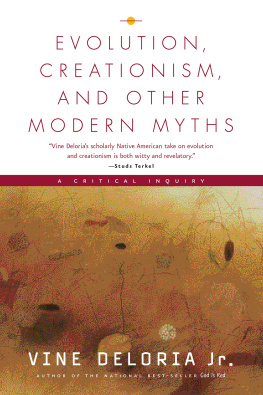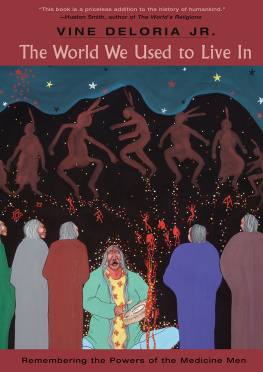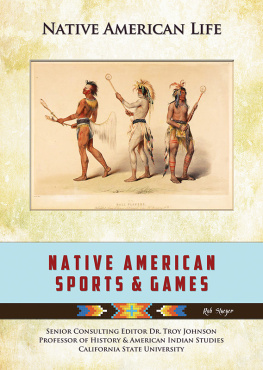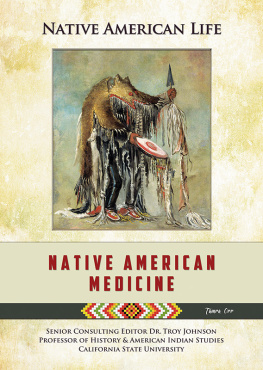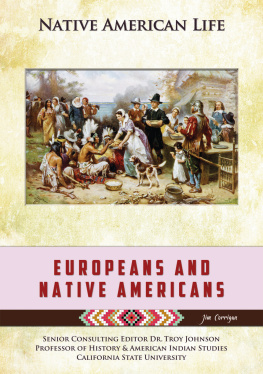Jr - God is red: a native view of religion
Here you can read online Jr - God is red: a native view of religion full text of the book (entire story) in english for free. Download pdf and epub, get meaning, cover and reviews about this ebook. City: Golden;Colo, year: 1993;1994, publisher: Fulcrum Publishing; Fulcrum Pub., North American Press, genre: Politics. Description of the work, (preface) as well as reviews are available. Best literature library LitArk.com created for fans of good reading and offers a wide selection of genres:
Romance novel
Science fiction
Adventure
Detective
Science
History
Home and family
Prose
Art
Politics
Computer
Non-fiction
Religion
Business
Children
Humor
Choose a favorite category and find really read worthwhile books. Enjoy immersion in the world of imagination, feel the emotions of the characters or learn something new for yourself, make an fascinating discovery.

- Book:God is red: a native view of religion
- Author:
- Publisher:Fulcrum Publishing; Fulcrum Pub., North American Press
- Genre:
- Year:1993;1994
- City:Golden;Colo
- Rating:3 / 5
- Favourites:Add to favourites
- Your mark:
- 60
- 1
- 2
- 3
- 4
- 5
God is red: a native view of religion: summary, description and annotation
We offer to read an annotation, description, summary or preface (depends on what the author of the book "God is red: a native view of religion" wrote himself). If you haven't found the necessary information about the book — write in the comments, we will try to find it.
Jr: author's other books
Who wrote God is red: a native view of religion? Find out the surname, the name of the author of the book and a list of all author's works by series.
God is red: a native view of religion — read online for free the complete book (whole text) full work
Below is the text of the book, divided by pages. System saving the place of the last page read, allows you to conveniently read the book "God is red: a native view of religion" online for free, without having to search again every time where you left off. Put a bookmark, and you can go to the page where you finished reading at any time.
Font size:
Interval:
Bookmark:
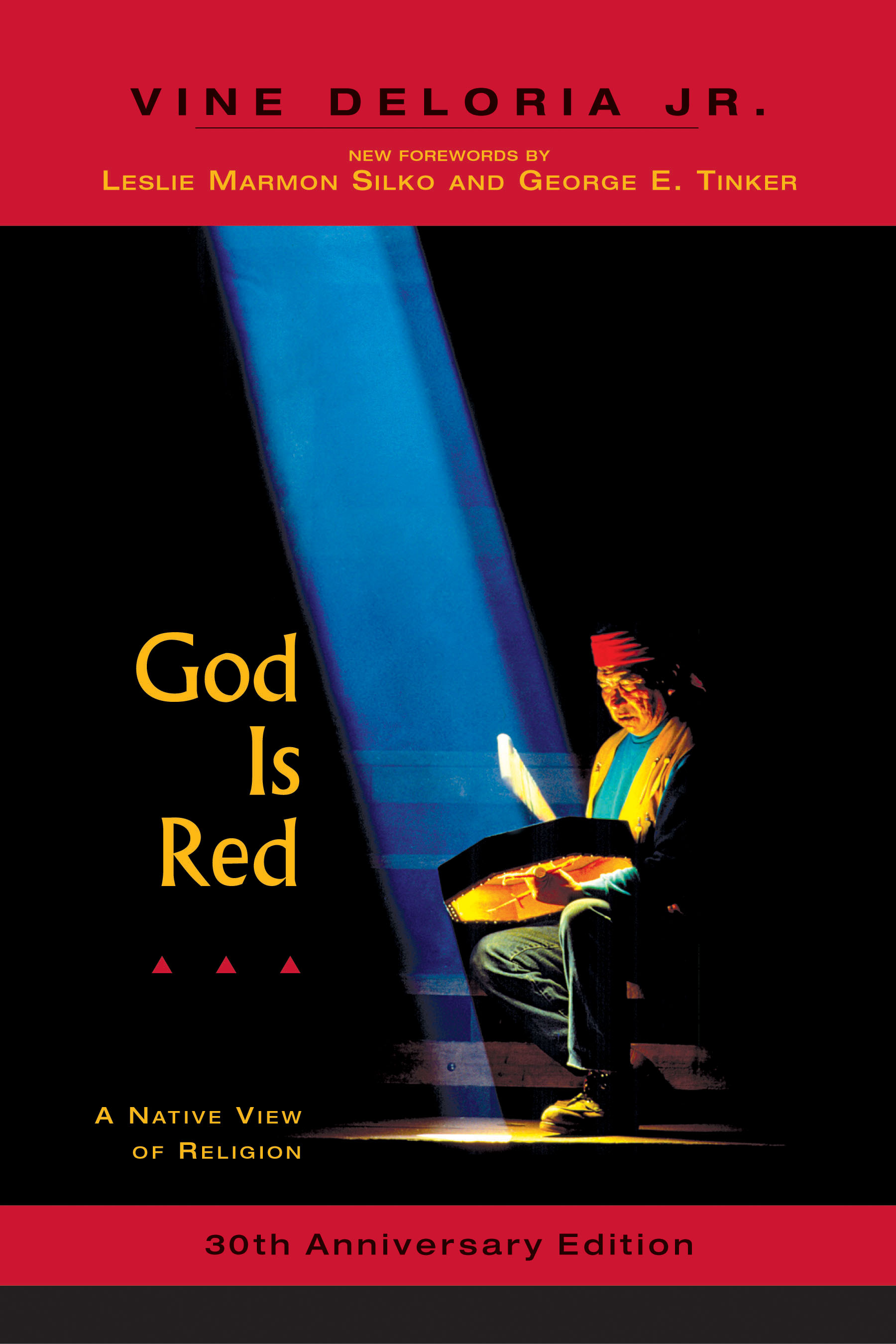
God I s Red
A Native View of Religion
Second Edition
VINE DELORIA, JR.
North American Press
A Division of Fulcrum Publishing
Golden, Colorado

Introduction
W hen I was a boy I often accompanied my father on trips to the different Sioux reservations in South Dakota. During these trips he would point out various features of the landscape and tell me the names and stories associated with them. Regrettably, I can only remember a few of the places today, but indelibly imprinted on my mind was the fact that the Sioux people cherished their lands and treated them as if they were people who shared a common history with humans. In 1972 when I was writing the first version of this book, I sought to emphasize the role that spaces and places play in our human religious perceptions.
From the invasion and occupation of Alcatraz in 1969 to the occupation at Wounded Knee in 1973, I felt that the various Indian protests had a much deeper meaning than simply securing additional lands for reservations. At the bottom of everything, I believed then and continue to believe, is a religious view of the world that seeks to locate our species within the fabric of life that constitutes the natural world, the land and all its various forms of life. As long as Indians exist there will be conflict between the tribes and any group that carelessly despoils the land and the life it supports. At the deepest philosophical level our universe must have as a structure a set of relationships in which all entities participate. Within the physical world this universal structure can best be understood as a recognition of the sacredness of places.
I have been very pleased to see the outpouring of books and articles attempting to deal with sacred spaces and places by Indian and non-Indian writers in the two decades since God Is Red was first published. It will take a continuing protest from an increasingly large chorus to reprogram the psychology of American society so that we will not irreversibly destroy the land we live on. Today our society is still at a primitive aesthetic stage of appreciating the personality of our lands, but we have the potential to move beyond mere aesthetics and come to some deep religious realizations of the role of sacred places in human life.
Feeling that a sufficiently significant number of people are now alerted to the ecological meltdown that we face, in this revised edition of the book I have felt free to raise additional questions about our species and our ultimate fate. It seems to me that our history on earth is far different than what we have been taught to believe. I suggest in this revised edition that we have on this planet two kinds of peoplenatural peoples and the hybrid peoples. The natural peoples represent an ancient tradition that has always sought harmony with the environment. Hybrid peoples are the product of what I refer to in chapter 9 as ancient genetic engineering that irrevocably changed the way these people view our planet. I can think of no other good reason why the peoples from the Near Eastthe peoples from the Hebrew, Islamic, and Christian religious traditionsfirst adopted the trappings of civilization and then forced a peculiar view of the natural world on succeeding generations. The planet, in their view, is not our natural home and is, in fact, ours for total exploitation. We are today reaching the nth term in this sequence of exploitation and face ecological disasters of such complete planetary scope as to surpass our wildest imagination.
Only a radical reversal of our attitudes toward nature can help us. While it is comforting to see the nations of the world meet and begin to deal with our environmental catastrophe, we may even now be too late to change the conditions we have created. It is extremely disturbing to see so many Americans wanting to clear cut the ancient forests, overgraze the remaining grasslands, and use the precious water of the continents for frivolous consumptive purposes. How many shopping malls and parking lots do we really need? In the United States we stand but a few dry years from ecological disasters that we cannot begin to fathom. Yet we see our government busy authorizing the destruction of the remaining wetlands on the continent so that a few developers can squeeze yet a few more dollars from a complacent public.
We are now in the process of celebrating the 500th anniversary of the discovery of the New World and the attitudes that marked the original discovery remain entrenched. In two recent decisions the U.S. Supreme Court has all but prohibited the practice of Indian traditional religions ( Lyng , 1988 and Smith , 1990). and opened Indian lands to coalitions of developers, mining interests, and other exploiters. All this exploitation unwittingly aided by the Christian churches, which have no understanding of the nature of the creation, now presses traditional people to the wall. It gives me no comfort to have predicted religious confrontation two decades ago only to see it now in its most virulent form. Nor do I look forward to paying the penalties that Mother Earth must now levy against us in order for Her to survive.
In traveling around the country I now see revivals of ancient ceremonies in many tribes as if the people had been warned of the catastrophes that await us. It is time for the people to gather and perform their old ceremonies and make a final effort to renew the earth and its peopleshoofed, winged, and others. Because many of these ceremonies are performed on behalf of the earth, all humans, and the other forms of life, it seems incomprehensible that they would be prohibited. But the prohibitions and the failure of the government to protect these traditions only highlights the nature of the conflict. Clearly the struggle is between a religious view of life and the secularization that science and industry have brought.
It remains for us to learn once again that we are a part of nature, not a transcendant species with no responsibilities to the natural world. As we face the twenty-first century, the next decade will be the testing ground for this proposition. We may well become one of the few species in this vast universe that has permanently ruined our home. Future explorers from other planets will walk this earthly wasteland and marvel at our stupidity and wonder why we could not accept the reality of our own finitude.
Vine Deloria, Jr.
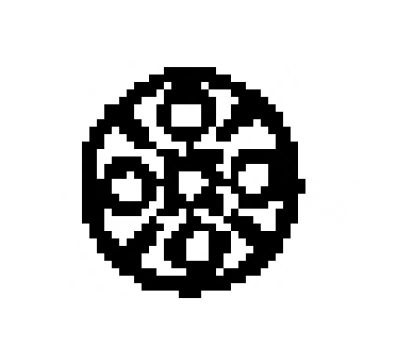
CHAPTER 1
The Indian
Movement
U ntil 1890 American Indians played a critically important role in American domestic affairs, symbolizing the vast wilderness and frontier that Americans wished to tame. From the 1890s until the 1960s Indians were truly the Vanishing Americans and most people believed that the tribes had largely been exterminated. There were token Indians present at Columbus Day and Thanksgiving celebrations and some Indian women sitting at the Santa Fe railroad stations selling pottery, but for most Americans Indians had ceased to exist.
It is difficult to describe just how America began to embrace Indians again in recent years. When the Indian protests began in the 1960s, white Americans learned that in the remote canyons of the West, the swamplands of the Great Lakes, and the southeastern United States were seemingly thousands upon thousands of Indians. Perhaps their first response was a sense of outrage and shock. Where were these angry Indians coming from and what was their gripe? They soon discovered that Indians had enjoyed treaty rights for nearly a century. They learned that as resources had been gobbled up by urban America they were now in conflict with American Indians over the remaining natural resources of the continent, the best of which were in Indian hands.
Font size:
Interval:
Bookmark:
Similar books «God is red: a native view of religion»
Look at similar books to God is red: a native view of religion. We have selected literature similar in name and meaning in the hope of providing readers with more options to find new, interesting, not yet read works.
Discussion, reviews of the book God is red: a native view of religion and just readers' own opinions. Leave your comments, write what you think about the work, its meaning or the main characters. Specify what exactly you liked and what you didn't like, and why you think so.




